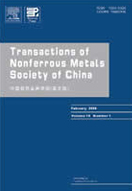Brazing of TiBw/TC4 composite and Ti60 alloy using TiZrNiCu amorphous filler alloy
(1. State Key Laboratory of Advanced Welding and Joining, Harbin Institute of Technology, Harbin 150001, China;
2. Shandong Provincial Key Laboratory of Special Welding Technology, Harbin Institute of Technology at Weihai, Weihai 264209, China)
Abstract: TiBw/TC4 composite was brazed to Ti60 alloy successfully using TiZrNiCu amorphous filler alloy, and the interfacial microstructures and mechanical properties were characterized by SEM, EDX, XRD and universal tensile testing machine. The typical interfacial microstructure was TiBw/TC4 composite/ β-Ti + TiB whiskers/ (Ti,Zr)2(Ni,Cu) intermetallic layer/ β-Ti/ Ti60 alloy when being brazed at 940 °C for 10 min. The interfacial microstructure evolution was influenced strongly by the diffusion and reaction between molten fillers and the substrates. Increasing brazing temperature decreased the thickness of brittle (Ti,Zr)2(Ni,Cu) intermetallic layer, which disappeared finally when the brazing temperature exceeded 1020 °C. Fracture analyses indicated that cracks were initialized in the brittle intermetallic layer when (Ti,Zr)2(Ni,Cu) phase existed in the brazing seam. The maximum average shear strength of joints reached 368.6 MPa when brazing was conducted at 1020 °C. Further increasing brazing temperature to 1060 °C, the shear strength was decreased due to the formation of coarse lamellar (α+β)-Ti structure.
Key words: brazing; TiBw/TC4 composite; Ti60 alloy; interfacial microstructure; fracture

